The Aichi E13A ("Jake" in allied nomenclature codes) was a long-range reconnaissance seaplane used by the Imperial Japanese Navy from 1941 to 1945 and numerically the most important. It proved agile and versatile as well, carrying a bomb load of 250 kg (550 lb) and able once to shoot down a Boeing B-29. The prototype first flew in mid-late 1939. It was approved in late 1939 and production started at Aichi Tokei Denki KK which only managed to produced 133 and Dai-Juichi Kaigun Kokusho only 48, but it's really Watanabe (Kyushu Hikoki KK) which produced the bulk, some 1,237. It was often compared to the German Arado 193, for good reasons. Both really had the same design philosophy.
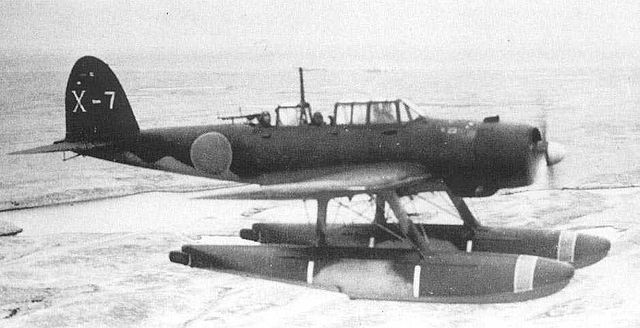
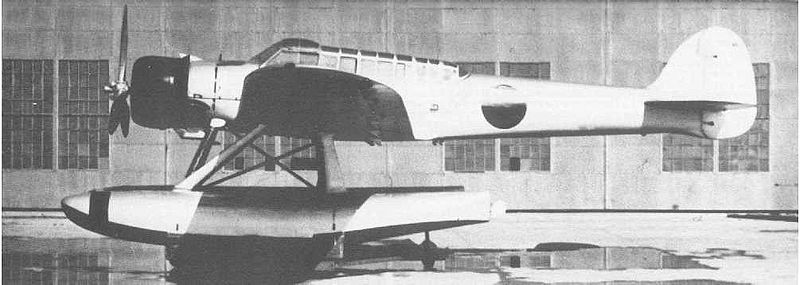 Prototype E13K-2 in 1939
The prototype E13A1 designed by Yoshishiro Matsuo answered specs for an agile 2-seater to performe artillery spotting and air cover, and it started testing in April 1938, compared with the two-seater E12A1. Early tests at Aichi showed the E13A1 was superior to the E12A1 in comparative speed and maneuverability but moreover in flight range. Kaigun Koku Hombu (The air branch of the Navy) decided its requirements for a reconnaissance, catapulted model dropping earlier requirements for a two-seater model. Indeed it was believed the Mitsubishi F1M2 seaplane could perform alternatve tasks, notably air defence. Thus, further work focused on a pure observation three-seater with a much longer long-range to replace the old Kawanishi E7K, becoming the E13A1.
Prototype E13K-2 in 1939
The prototype E13A1 designed by Yoshishiro Matsuo answered specs for an agile 2-seater to performe artillery spotting and air cover, and it started testing in April 1938, compared with the two-seater E12A1. Early tests at Aichi showed the E13A1 was superior to the E12A1 in comparative speed and maneuverability but moreover in flight range. Kaigun Koku Hombu (The air branch of the Navy) decided its requirements for a reconnaissance, catapulted model dropping earlier requirements for a two-seater model. Indeed it was believed the Mitsubishi F1M2 seaplane could perform alternatve tasks, notably air defence. Thus, further work focused on a pure observation three-seater with a much longer long-range to replace the old Kawanishi E7K, becoming the E13A1.
At the end of October, the tri-seat definitive E13A1 started comparative tests with the Kawanishi E13K1. The latter seemed to surpass the E13A in most characteristics other than top speed despite having a less powerful engine. However it was far more difficult to operate and maintain. By the summer of 1939, the first E13K1 prototype crashed in flight while the second and final one went missing during another long range test flight. Thus, the competition was won by default by the more reliable, but slightly inferior Aichi model.
In December 1940, the Aichi E13A1 was adopted officially by the fleet, under designation "Reishiki minakamitei satsuki" or "Type 0 Model 11 Marine Reconnaissance Aircraft". The official name became E13A1 but operation, it was shortened by personal as the abbreviated "Reimisu" and eventually "Reisu". This never was an official name. Mass production was approved at Aichi, Funakata, but the company had conflicting priorities and could in the end only deliver 133 models. By 1942, the plant started production of the D3A2 dive bomber instead. Production was transferred to Watanabe, later renamed into Kyushu Hikoki KK. From 1942 to 1945, it cranked up 1,237 here. 48 more were also produced at the 11th Naval Aviation Arsenal (Hiro) in 1940-1942.
The E13A was practically not modified, and obly had a a few confidential variants. Production of the E13A1 only started from November 1944 with a different float mounting and former rigid struts connecting the float to the wing replaced with simpler cable guides. The sub-variant E13A1b received the Type 3 Ku Model 6 (H6) search radar for night or poor visibility reconnaissance, its antennas installed along the aft side of the fuselage and wing's leading edges.
The E13A was poorly armed, with just a single rear-facing LMG, so the 1c version came with a 20-mm Type 99-1 cannon on a mobile mount for the rear gunner, introduced in the second half of 1944, after severe losses at the battle of the Mariana Islands. Models without official designation also were equipped with magnetometers to detect submarines but it was largely ineffective, working only at 10 m above water. In 1945 work went on night versions with flame arresters.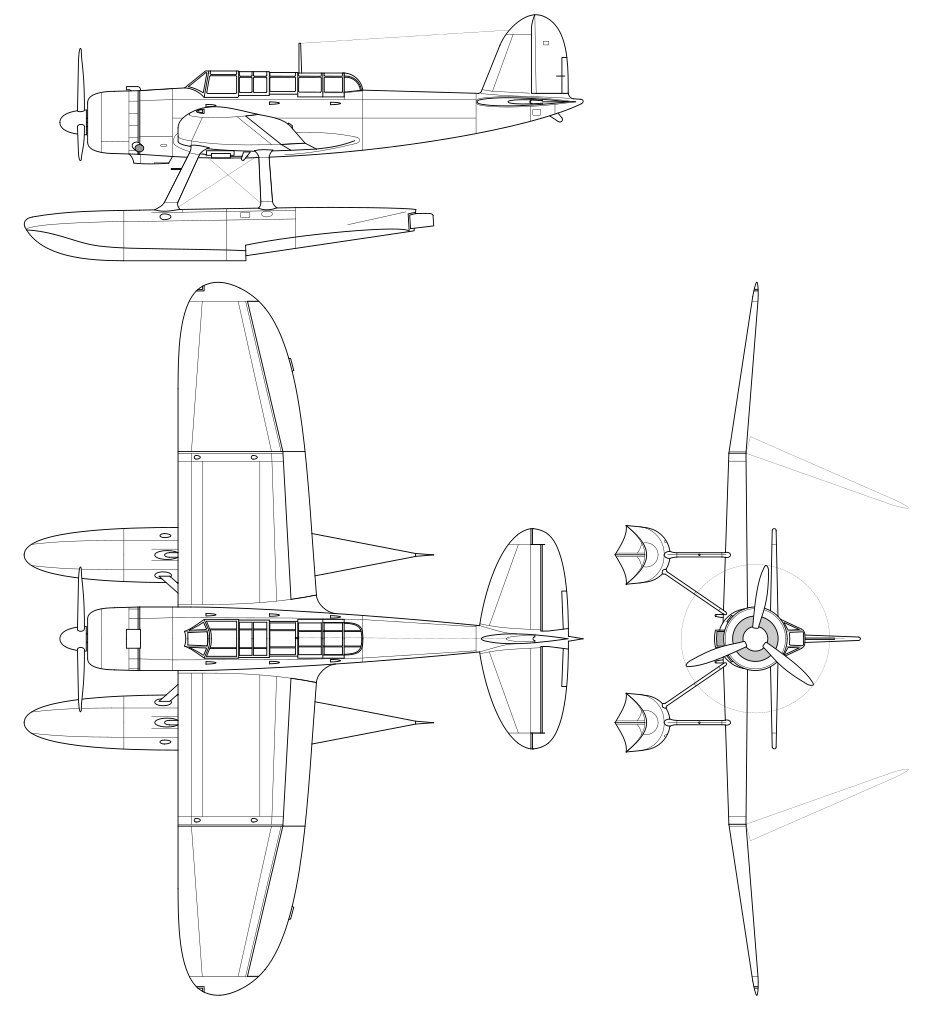
E13A1-K: Trainer version with dual controls
E13A1a: Redesigned floats, improved radio equipment
E13A1a-S: Night-flying conversion, with radar
E13A1b: As E13A1a, with Air-Surface radar
E13A1b-S: Night-flying conversion of above
E13A1c: Anti-surface vessel version equipped with two downward-firing belly-mounted 20 mm Type 99 Mark II cannons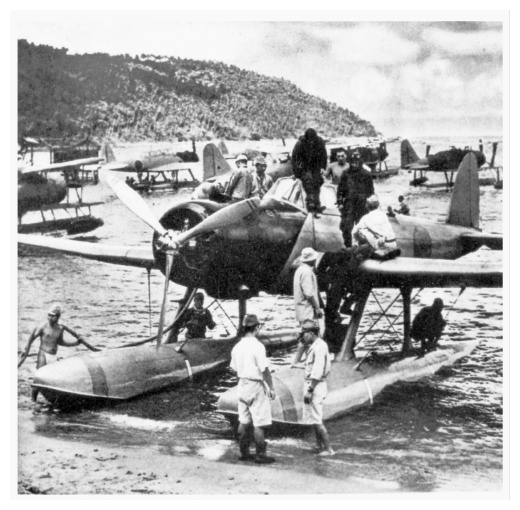
An Aichi E13A, probably from Kamikawa Maru's air unit, possibly photographed at Deboyne Islands during the Battle of the Coral Sea.
The "Navy Type Zero Reconnaissance Seaplane" started its service in China, operated from seaplane tenders and cruisers. As a scouts they took part in the Pearl Harbor attack, surveying the area before the main raid in the early hours of the morning and screening the fleet as it arrived. Some were shot down at the Battles of Coral Sea and Midway. It was also deployed in the Philippines, took part in the Java Sea and Borneo operations, as wel as from seaplane bases. They performed a large number of tasks, coastal patrols, navigation strikes, liaison, officer transports, rescues, even ground support. In 1945 they started to be used for kamikaze missions as the fleet they were supposed to screen no longer existed. Several were carried by Yamato and Musashi as their main catapulted model. Each had seven of them.
One Aichi E13A was recuperated by Nazi Germany, used alonsgide two Arado Ar 196s at Penang during their commerce raiding campaign in the Indian Ocean. They formed the Kriegsmarine's "East Asia Naval Special Service", spotting targets of opportunity in advance for the Monsun Gruppe and local Japanese naval operations. Eight were operated by the French Navy Air Force, all captured locally, in the First Indochina War 1945-1947. Also from 1941, some were provided to the Royal Thai Navy. MSN 4326 was surrendered to New Zealand forces and tested by RNZAF personnel, then scuttled in Jacquinot Bay.
Wrecks are recorded, mostly underwater, but one was spotted on-land at an abandoned seaplane base at Lenger Island, Pohnpei (Micronesia), another was raised, not restored, displayed at the Kakamigahara Aerospace Museum. The E13A1 (MSN 4116) was raised in 1992 off Minamisatsuma and displayed at the Bansei Tokkō Peace Museum. None exists in flying conditions.

Development and Design
 Prototype E13K-2 in 1939
The prototype E13A1 designed by Yoshishiro Matsuo answered specs for an agile 2-seater to performe artillery spotting and air cover, and it started testing in April 1938, compared with the two-seater E12A1. Early tests at Aichi showed the E13A1 was superior to the E12A1 in comparative speed and maneuverability but moreover in flight range. Kaigun Koku Hombu (The air branch of the Navy) decided its requirements for a reconnaissance, catapulted model dropping earlier requirements for a two-seater model. Indeed it was believed the Mitsubishi F1M2 seaplane could perform alternatve tasks, notably air defence. Thus, further work focused on a pure observation three-seater with a much longer long-range to replace the old Kawanishi E7K, becoming the E13A1.
Prototype E13K-2 in 1939
The prototype E13A1 designed by Yoshishiro Matsuo answered specs for an agile 2-seater to performe artillery spotting and air cover, and it started testing in April 1938, compared with the two-seater E12A1. Early tests at Aichi showed the E13A1 was superior to the E12A1 in comparative speed and maneuverability but moreover in flight range. Kaigun Koku Hombu (The air branch of the Navy) decided its requirements for a reconnaissance, catapulted model dropping earlier requirements for a two-seater model. Indeed it was believed the Mitsubishi F1M2 seaplane could perform alternatve tasks, notably air defence. Thus, further work focused on a pure observation three-seater with a much longer long-range to replace the old Kawanishi E7K, becoming the E13A1.
At the end of October, the tri-seat definitive E13A1 started comparative tests with the Kawanishi E13K1. The latter seemed to surpass the E13A in most characteristics other than top speed despite having a less powerful engine. However it was far more difficult to operate and maintain. By the summer of 1939, the first E13K1 prototype crashed in flight while the second and final one went missing during another long range test flight. Thus, the competition was won by default by the more reliable, but slightly inferior Aichi model.
In December 1940, the Aichi E13A1 was adopted officially by the fleet, under designation "Reishiki minakamitei satsuki" or "Type 0 Model 11 Marine Reconnaissance Aircraft". The official name became E13A1 but operation, it was shortened by personal as the abbreviated "Reimisu" and eventually "Reisu". This never was an official name. Mass production was approved at Aichi, Funakata, but the company had conflicting priorities and could in the end only deliver 133 models. By 1942, the plant started production of the D3A2 dive bomber instead. Production was transferred to Watanabe, later renamed into Kyushu Hikoki KK. From 1942 to 1945, it cranked up 1,237 here. 48 more were also produced at the 11th Naval Aviation Arsenal (Hiro) in 1940-1942.
The E13A was practically not modified, and obly had a a few confidential variants. Production of the E13A1 only started from November 1944 with a different float mounting and former rigid struts connecting the float to the wing replaced with simpler cable guides. The sub-variant E13A1b received the Type 3 Ku Model 6 (H6) search radar for night or poor visibility reconnaissance, its antennas installed along the aft side of the fuselage and wing's leading edges.
The E13A was poorly armed, with just a single rear-facing LMG, so the 1c version came with a 20-mm Type 99-1 cannon on a mobile mount for the rear gunner, introduced in the second half of 1944, after severe losses at the battle of the Mariana Islands. Models without official designation also were equipped with magnetometers to detect submarines but it was largely ineffective, working only at 10 m above water. In 1945 work went on night versions with flame arresters.
Detailed specs

Specs Aichi E13A | |
| Crew: | 3: Pilot, Observer/Navigator, Gunner |
| Fuselage Lenght | 11.3 m (37 ft 1 in) |
| Wingspan | 14.5 m (47 ft 7 in) |
| Wing area | 36 m2 (390 sq ft) |
| Height | 4.7 m (15 ft 5 in) |
| Empty weight: | 2,642 kg (5,825 lb), gross 3,640 kg (8,025 lb) |
| Max takeoff weight: | 4,000 kg (8,818 lb) |
| Powerplant: | Mitsubishi MK8 Kinsei 43 14-cyl. ACRPE 790 kW (1,060 hp) TO |
| Propeller: | 3-bladed metal |
| Maximum speed: | 376 km/h (234 mph, 203 kn) at 2,180 m (7,150 ft) |
| Endurance: | 2,089 km (1,298 mi, 1,128 nmi) or 14h at 222 km/h (138 mph, 120 kn) |
| Service ceiling: | 8,730 m (28,640 ft), 3,000 m (9,800 ft) in 6 minutes 5 seconds |
| Wing Loading: | 101.1 kg/m2 (20.7 lb/sq ft) |
| Power/mass: | 0.2163 kW/kg (0.1316 hp/lb) |
| Armament | flexible rear 7.7 mm Type 92, 250 kg (551 lb) of bombs |
Variants
E13A1: Prototypes and first production model, later designated Model 11.E13A1-K: Trainer version with dual controls
E13A1a: Redesigned floats, improved radio equipment
E13A1a-S: Night-flying conversion, with radar
E13A1b: As E13A1a, with Air-Surface radar
E13A1b-S: Night-flying conversion of above
E13A1c: Anti-surface vessel version equipped with two downward-firing belly-mounted 20 mm Type 99 Mark II cannons
The E13A in operations

An Aichi E13A, probably from Kamikawa Maru's air unit, possibly photographed at Deboyne Islands during the Battle of the Coral Sea.
The "Navy Type Zero Reconnaissance Seaplane" started its service in China, operated from seaplane tenders and cruisers. As a scouts they took part in the Pearl Harbor attack, surveying the area before the main raid in the early hours of the morning and screening the fleet as it arrived. Some were shot down at the Battles of Coral Sea and Midway. It was also deployed in the Philippines, took part in the Java Sea and Borneo operations, as wel as from seaplane bases. They performed a large number of tasks, coastal patrols, navigation strikes, liaison, officer transports, rescues, even ground support. In 1945 they started to be used for kamikaze missions as the fleet they were supposed to screen no longer existed. Several were carried by Yamato and Musashi as their main catapulted model. Each had seven of them.
One Aichi E13A was recuperated by Nazi Germany, used alonsgide two Arado Ar 196s at Penang during their commerce raiding campaign in the Indian Ocean. They formed the Kriegsmarine's "East Asia Naval Special Service", spotting targets of opportunity in advance for the Monsun Gruppe and local Japanese naval operations. Eight were operated by the French Navy Air Force, all captured locally, in the First Indochina War 1945-1947. Also from 1941, some were provided to the Royal Thai Navy. MSN 4326 was surrendered to New Zealand forces and tested by RNZAF personnel, then scuttled in Jacquinot Bay.
Wrecks are recorded, mostly underwater, but one was spotted on-land at an abandoned seaplane base at Lenger Island, Pohnpei (Micronesia), another was raised, not restored, displayed at the Kakamigahara Aerospace Museum. The E13A1 (MSN 4116) was raised in 1992 off Minamisatsuma and displayed at the Bansei Tokkō Peace Museum. None exists in flying conditions.

E13A on IJN Oyodo 1944
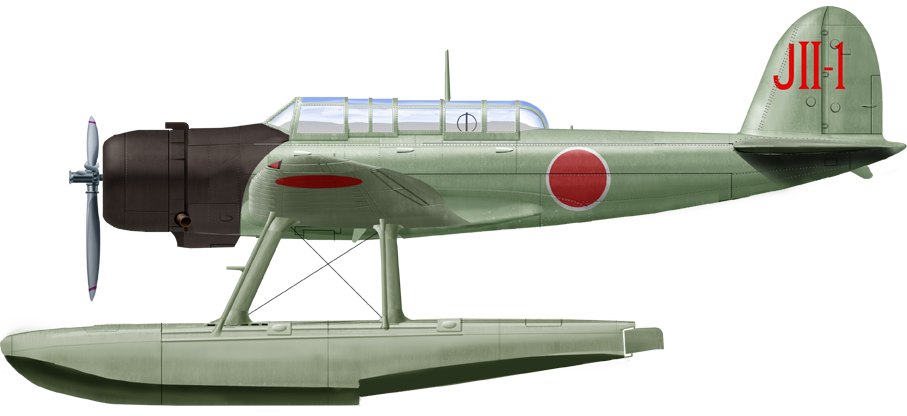
E13A1 mod 11 on IJN Chikuma
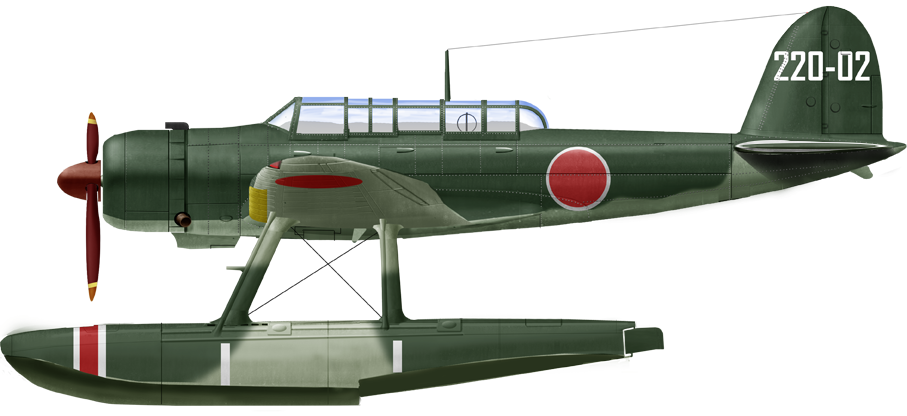
E13A on IJN Yahagi
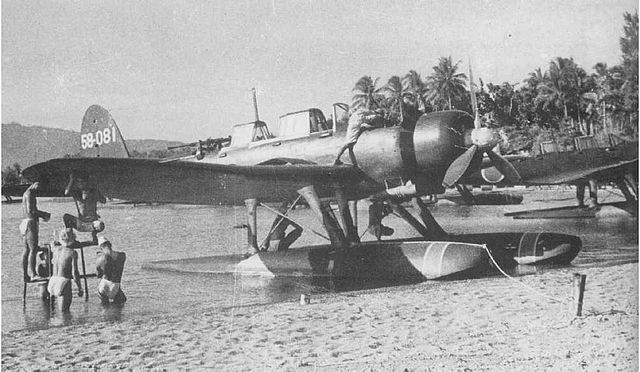
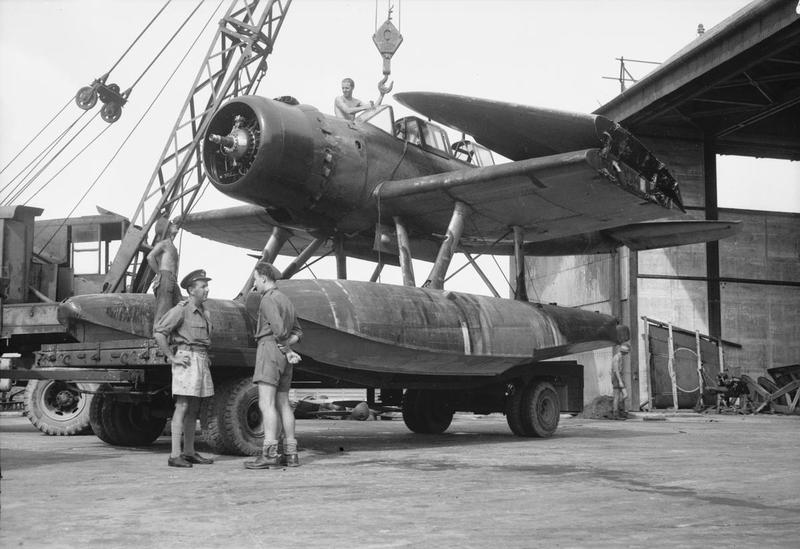
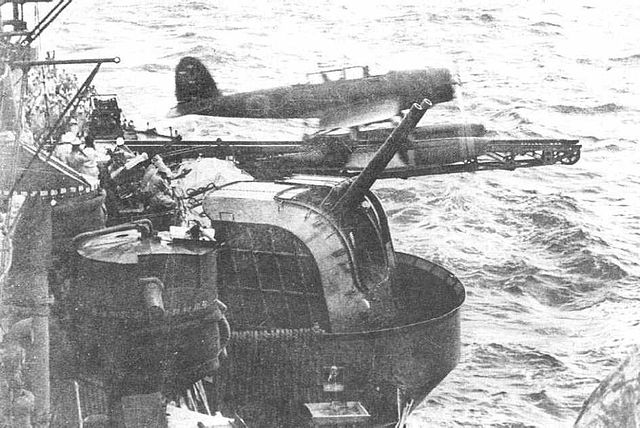
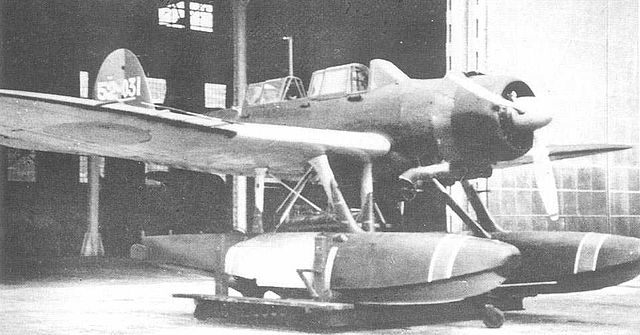
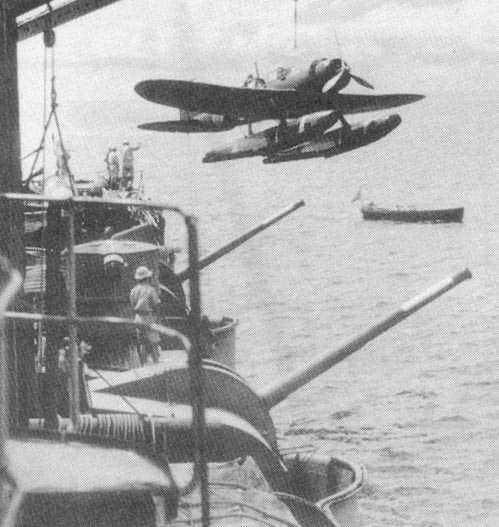
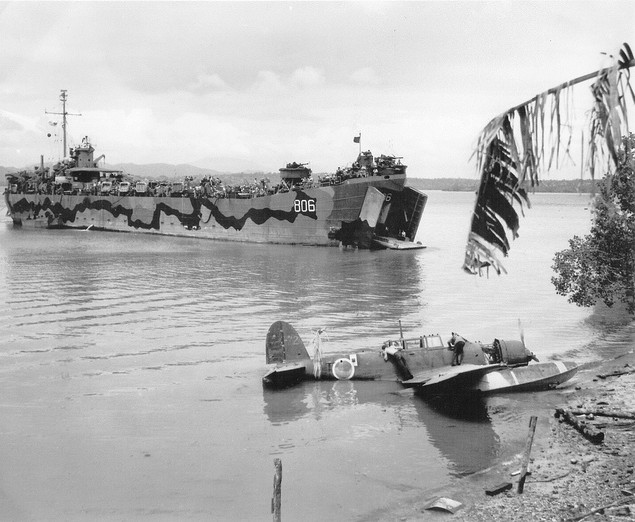
Read More/Src
Books
Dorr, Robert E.; Bishop, Chris (1996), Vietnam Air War Debrief, London, UK: Aerospace PublishingFrancillon, René J. (1979), Japanese Aircraft of the Pacific War (2nd ed.) Putnam & Company
Millot, Bernard (June 1977). "Aichi E13A "Jake". Le Fana de l'Aviation (in French). No. 91.
Pelletier, Alain (August 1995). Japanese airplanes in French colours. Le Fana de l'Aviation (in French). No. 309.
Links
en.wikipedia.orgairpages.ru
militaryfactory.com
combinedfleet.com
daveswarbirds.com
pilotfriend.com
skytamer.com
aviastar.org
warbirdsresourcegroup.org
pacificeagles.net
Videos
Model Kits
All kits on scalemates.com- Lohner E (1913)
- Macchi M3 (1916)
- Macchi M5 (1918)
- Ansaldo ISVA (1918)
- Sopwith Baby (1916)
- Short 184 (1916)
- Fairey Campania (1917)
- Sopwith Cuckoo (1917)
- Felixstowe F.2 (1917)
- Friedrichshafen FF 33 (1916)
- Albatros W4 (1916)
- Albatros W8 (1918)
- Hanriot HD.2
- Grigorovitch M5
- IJN Farman MF.7
- IJN Yokosho Type Mo
- Yokosho Rogou Kougata (1917)
- Yokosuka Igo-Ko (1920)
- Curtiss N9 (1916)
- Aeromarine 39
- Vought VE-7
- Douglas DT (1921)
- Boeing FB.5 (1923)
- Boeing F4B (1928)
- Vought O2U/O3U Corsair (1928)
- Blackburn Blackburn (1922)
- Supermarine Seagull (1922)
- Blackburn Ripon (1926)
- Fairey IIIF (1927)
- Fairey Seal (1930)
- LGL-32 C.1 (1927)
- Caspar U1 (1921)
- Dornier Do J Wal (1922)
- Rohrbach R-III (1924)
- Mitsubishi 1MF (1923)
- Mitsubishi B1M (1923)
- Yokosuka E1Y (1923)
- Nakajima A1N (1927)
- Nakajima E2N (1927)
- Mitsubishi B2M (1927)
- Nakajima A4N (1929)
- CANT 18
WW1
✠ K.u.K. Seefliegerkorps:
 Italian Naval Aviation
Italian Naval Aviation
 RNAS
RNAS
 Marineflieger
Marineflieger
 French Naval Aviation
French Naval Aviation
 Russian Naval Aviation
Russian Naval Aviation
 IJN Air Service
IJN Air Service
 USA
USA
Interwar
 Interwar US
Interwar US
 Interwar Britain
Interwar Britain
 Interwar France
Interwar France
 Interwar Germany
Interwar Germany
 Interwar Japan
Interwar Japan
 Interwar Italy
Interwar Italy
- Curtiss SOC seagull (1934)
- Grumman FF (1931)
- Curtiss F11C Goshawk (1932)
- Grumman F2F (1933)
- Grumman F3F (1935)
- Northrop BT-1 (1935)
- Grumman J2F Duck (1936)
- Consolidated PBY Catalina (1935)
- Brewster/NAF SBN-1 (1936)
- Curtiss SBC Helldiver (1936)
- Vought SB2U Vindicator (1936)
- Brewster F2A Buffalo (1937)
- Douglas TBD Devastator (1937)
- Vought Kingfisher (1938)
- Curtiss SO3C Seamew (1939)
- Douglas SBD Dauntless (1939)
- Grumman F4F Wildcat (1940)
- F4U Corsair (NE) (1940)
- Brewster SB2A Buccaneer (1941)
- Grumman TBF/TBM Avenger (1941)
- Consolidated TBY Sea Wolf (1941)
- Grumman F6F Hellcat (1942)
- Curtiss SB2C Helldiver (1942)
- Curtiss SC Seahawk (1944)
- Grumman F8F Bearcat (1944)
- Ryan FR-1 Fireball (1944)
- Douglas AD-1 Skyraider (1945)
Fleet Air Arm
- Fairey Swordfish (1934)
- Blackburn Shark (1934)
- Supermarine Walrus (1936)
- Fairey Seafox (1936)
- Blackburn Skua (1937)
- Short Sunderland (1937)
- Blackburn Roc (1938)
- Fairey Albacore (1940)
- Fairey Fulmar (1940)
- Grumman Martlet (1941)
- Hawker sea Hurricane (1941)
- Brewster Bermuda (1942)
- Fairey Barracuda (1943)
- Fairey Firefly (1943)
- Grumman Tarpon (1943)
- Grumman Gannet (1943)
- Supermarine seafire (1943)
- Blackburn Firebrand (1944)
- Hawker Sea Fury (1944)
IJN aviation
- Aichi D1A "Susie" (1934)
- Mitsubishi A5M "Claude" (1935)
- Nakajima A4N (1935)
- Yokosuka B4Y "Jean" (1935)
- Mitsubishi G3M "Nell" (1935)
- Nakajima E8N "Dave" (1935)
- Kawanishi E7K "Alf" (1935)
- Nakajima B5N "Kate" (1937)
- Kawanishi H6K "Mavis" (1938)
- Aichi D3A "Val" (1940)
- Mitsubishi A6M "zeke" (1940)
- Nakajima E14Y "Glen" (1941)
- Nakajima B6N "Jill" (1941)
- Mitsubishi F1M "pete" (1941)
- Aichi E13A Reisu "Jake" (1941)
- Kawanishi E15K Shiun "Norm" (1941)
- Nakajima C6N Saiun "Myrt" (1942)
- Yokosuka D4Y "Judy" (1942)
- Kyushu Q1W Tokai "Lorna" (1944)
Luftwaffe
- Arado 196 (1937)
- Me109 T (1938)
- Blohm & Voss 138 Seedrache (1940)
Italian Aviation
- Savoia-Marchetti S.55
- IMAM Ro.43/44
- CANT Z.501 Gabbiano
- CANT Z.506 Airone
- CANT Z.508
- CANT Z.511
French Aeronavale
- GL.300 (1926-39)
- Levasseur PL.5 (1927)
- Potez 452 (1935)
- Loire 210 (1936)
- Loire 130 (1937)
- LN 401 (1938)
Soviet Naval Aviation
- Shavrov SH-2 (1928)
- Tupolev TB-1P (1931)
- Beriev MBR-2 (1930)
- Tupolev MR-6 (1933)
- Tupolev MTB-1 (1934)
- Beriev Be-2 (1936)
- Polikarpov I16 naval (1936)
- Tupolev MTB-2 (1937)
- Ilyushine DB-3T/TP (1937)
- Beriev Be-4 (1940)
-
Skoda Š-328V
R-XIII Idro
Fokker C.XI W (1934)
WW2
- De Havilland Sea Vixen
- Hawker Sea Hawk
- Supermarine Scimitar
- Blackburn Buccaneer
- Hawker Sea Harrier
- Douglas A4 Skyhawk
- Grumman F9F Panther
- Vought F8 Crusader
- McDonnell-Douglas F-4 Phantom-II
- North Am. A5 Vigilante
- TU-142
- Yak 38 forger
☢ Cold War
✧ NATO
 Fleet Air Arm
Fleet Air Arm
 US Navy
US Navy
☭ Warsaw Pact
Merch

Seafire Mark 45; HMS Pretoria Castle

Zeros vs its aversaries

Aichi D3A “Val” Junyo

Mitsubishi A5M poster

F4F wildcat

Macchi M5

SBD Dauntless Coral Sea

SBD Dauntless USS Enterprise

SBD-4 CV22